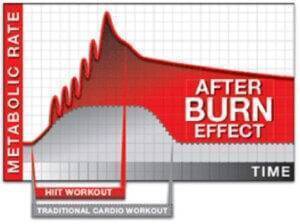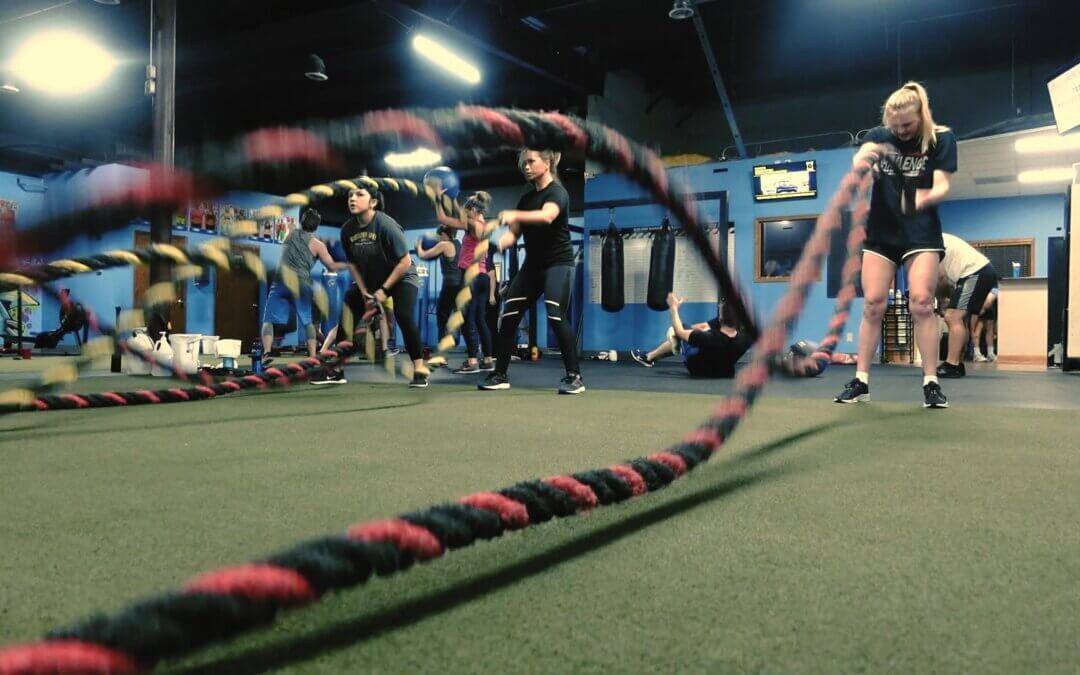What is Cardio?
I’ve heard a lot of people talk about what cardio is, and many are confused about what “cardio” even means. Is running cardio? Is boxing cardio? Is weightlifting cardio? Is deadlifting cardio? How about soccer, or MMA?
Are you also confused about what cardio is? Read on and I will tell you what is and what it is not!
Aerobic Cardio vs. Anaerobic Cardio
When it comes to physical training, cardio is defined as anything that raises your heart and breathing rates and strengthens your heart and lungs. Often people think aerobic training and cardio training are the same thing: this simply comes down to a lack of knowledge. Aerobic exercise is just one form of cardio training, but it is not the only one.
Your body has two energy systems: aerobic and anaerobic. Aerobic requires oxygen, and anaerobic doesn’t require oxygen. Aerobic exercise is a longer and more steady state, like jogging for 10 or more minutes. Anaerobic is more intense and fast, like deadlifting with a barbell for 20 – 40 seconds, or a full out sprint for 30 seconds.
The aerobic system and the anaerobic system are like two different engines. If you only train one of these engines you will be in big trouble when you need the other one. A wide ranging variety of studies show that both aerobic and anaerobic improve cardiovascular function. Sports like boxing and MMA require both forms of cardio, and I recommend you incorporate both into your training.
Heart Rate Monitors
Because cardiovascular exercise is directly related to your heart rate and how hard you are working, many serious athletes and trainers use heart rate monitors. You need data to work with when training to improve your cardiovascular system, and heart rate monitors are great at providing this data.
One way to use heart rate monitors that I learned from Martin Rooney when I was fighting professionally was to monitor output as well as recovery. For example, let’s say I was doing a treadmill incline sprint for 30 seconds, jumping off and doing a set of 8 on bench, followed immediately by 8 reps on pull ups. I would repeat that 3 times, but in between each set the rest period was determined by when my heart rate dropped back to 120.
Instead of just rushing through trying to get as much done as fast as I could, I would take that time to let my heart rate come down between sets. The reason for doing this is to improve the ability to recover. If it takes 70 seconds for my heart rate to get back down to 120 at the start of the program, my goal is to cut that number down to 30 seconds over 6-8 weeks. But if you never take the time to measure and manage your ability to recover and monitor you rest periods, you will never improve your cardiovascular ability.
HIIT Circuit Training
Stop thinking that you have to run, bike or do jumping jacks to do cardio: lifting weights can be cardio too! This is called circuit training, and athletes have been using this style for years. It’s not what you do, it’s how you do it. Anything can be cardio if you do it with enough intensity and duration. Think about the difference between a jog, a run and a sprint: a jog is aerobic training, a run can be a combination of aerobic and anaerobic, and a sprint by definition must be anaerobic.
There is an inverse relationship between intensity and duration. A true sprint is not a sprint unless it’s a full out effort in a short burst, usually no longer than 45 seconds at the most. By definition, a 2-3 minute sprint is impossible. High-intensity Interval Training (HIIT) is an anaerobic exercise strategy that employs an intense bout of exercise followed by a brief rest. HIIT protocols use a variety of work to rest ratios (i.e. 20 seconds on, 10 seconds off) and consist of 5 – 10 cycles per circuit. Typical workouts consist of 4 – 6 circuits lasting 20 – 30 minutes (not including warm-up and cool-down).
In 1994, researchers for the Metabolism Journal discovered that each calorie you expend during high-intensity exercise burns up to nine times more fat than the same calorie expended during steady state aerobic exercise!
HIIT accomplishes this in the following ways:

⦁ Creates the Optimal Hormonal Environment for Fat Loss: HIIT puts your body in a “fight or flight” mode. As a result, your body releases certain hormones that directly mobilize stored fat to be burned off as energy during exercise.
⦁ Burn a TON of calories both during and after exercise: Excess Post-exercise Oxygen Consumption (EPOC), otherwise known as post-workout “AFTER-BURN” is a measurably increased rate of oxygen intake after strenuous activity. This after-burn creates an elevated metabolic rate for 24-48 hours after exercise where fat is the primary fuel source. In other words, you burn more fat while you’re resting!
⦁ Increased glycogen storage: HIIT training rapidly reduces glycogen (stored sugar in the muscle cells) during training. With proper post-workout refueling your muscle cells “learn” to store more sugar, thus preventing that unwanted sugar-to-fat conversion. Carbs aren’t the enemy when they have a place to go other than your butt and gut.
Putting it Into Practice
So, what’s an example of a HIIT circuit? Here’s one of my favorites. It’s an 8-exercise circuit that can be performed with a single Kettlebell or band anywhere:
⦁ Exercise #1: High Pull
⦁ Exercise #2: Front Squat
⦁ Exercise #3: Overhead Press
⦁ Exercise #4: Hammer Curl
⦁ Exercise #5: Chest Press
⦁ Exercise #6: Deadlift
⦁ Exercise #7: Bent-over Row
⦁ Exercise #8: Straight-legged Deadlift
Alternate between 20 seconds of work and 10 seconds of rest for all 8 exercises, followed by 1 minute of rest. Perform this circuit 4 times for a 20-minute total body fat burning workout.
Some people may see these exercises and think this is not “Cardio” because you are using a weight. Nothing could be further from the truth. This is not aerobics, but it is cardio: you are just using a lighter weight than if you were doing strength training.
The key to creating the optimal hormonal environment for fat loss is to perform each exercise with maximal intensity, separated by brief rest periods. This allows you to accumulate a high volume of total body work in the shortest amount of time possible. HIIT provides for the best of both worlds, and is thus simply unmatched for simultaneously maximizing fat loss and lean muscle gain. It’s also a blast to perform!
So, get out there and do some cardio, in the way that works best for you!

